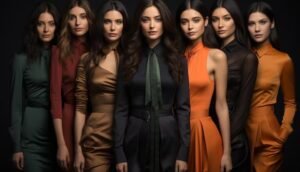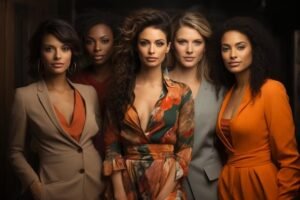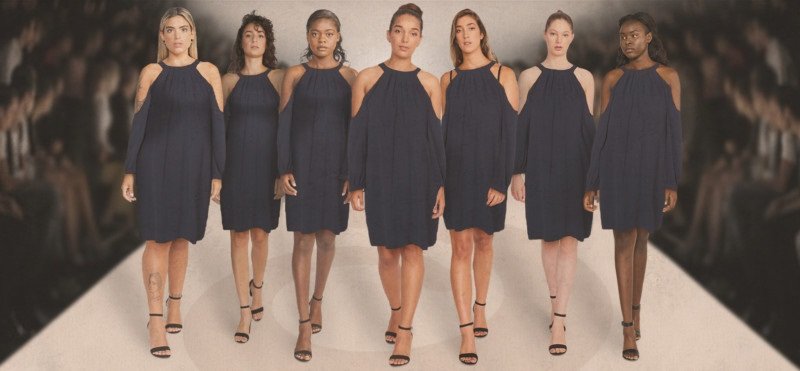A Complete Guide to Fashion Mannequins: Types, Uses, and Benefits in 2025
Fashion mannequins are more than just displays; they are essential tools in the retail industry, serving as a vital part of visual merchandising, helping businesses showcase their products, and driving consumer engagement. Whether you own a boutique, a high-end fashion store, or are setting up a pop-up shop, mannequins can make a world of difference in how your clothing is perceived. This comprehensive guide dives deep into the world of fashion mannequins—what they are, the various types available, their uses, and how to select the right one for your business. We also include some important information in tables for easy reference and a closer look at the latest trends and tips.
1. Introduction to Fashion Mannequins
Fashion mannequins have been an integral part of retail for decades, providing a means for stores to showcase clothing in a more lifelike and appealing way. A mannequin serves as a three-dimensional model, typically made from materials like fiberglass, plastic, or foam, that displays a particular outfit or look. Originally, they were used to fit and display clothing for tailors or dressmakers, but over time, they’ve evolved into marketing and merchandising tools.
With advancements in mannequin design, there are now several varieties that can suit different retail environments. From high-end stores to pop-up shops, mannequins come in a wide range of styles, sizes, and poses, giving retailers the freedom to represent their clothing line in the best light possible.
2. Why Are Fashion Mannequins Important in Retail?
Fashion mannequins help retailers in several key ways. Not only do they display clothing effectively, but they also create a visually appealing atmosphere that encourages customers to engage with the store’s offerings. Here are a few reasons why mannequins are so important:
- Attract Attention: Mannequins help draw customers into stores by showcasing clothing in an eye-catching way.
- Create a Connection: When customers see a mannequin dressed in a well-curated outfit, it helps them envision themselves in the clothes.
- Increase Sales: Studies show that when clothing is displayed on mannequins, it leads to an increase in sales compared to simply hanging the clothes on racks.
- Highlight Styles: Mannequins allow stores to feature specific outfits, styles, and trends, guiding customers to certain collections.
3. Types of Fashion Mannequins

Fashion mannequins come in various types, each designed to serve a different purpose or suit a specific aesthetic. Below are the most common types of fashion mannequins available for retailers.
Full-Body Mannequins
Full-body mannequins are the most traditional type. They provide a complete representation of a human body and are ideal for displaying entire outfits, from head to toe. These mannequins can be styled in a wide variety of ways, and they often have lifelike features.
| Feature | Description |
|---|---|
| Material | Fiberglass, plastic, or foam |
| Poseability | Static or adjustable poses |
| Best for | High-end fashion stores, department stores |
Torso Mannequins
Torso mannequins, as the name suggests, are designed to showcase clothing from the waist up. These mannequins are perfect for displaying tops, shirts, dresses, and accessories. Torso mannequins are space-efficient and can be used for more compact displays.
| Feature | Description |
|---|---|
| Material | Foam or plastic |
| Poseability | Fixed |
| Best for | Displaying tops, blouses, dresses, scarves |
Dress Forms
Dress forms are similar to full-body mannequins, but they often come without arms or heads.
| Feature | Description |
|---|---|
| Material | Fabric-covered or foam |
| Poseability | Adjustable bust and waist size |
| Best for | Fitting, fashion design, casual fashion displays |
Child and Teen Mannequins
These mannequins are designed specifically for showcasing children’s or teen clothing. They are smaller in size and more accurate in proportions for younger body types. These mannequins help retailers create child or teen-focused displays with greater precision.
| Feature | Description |
|---|---|
| Material | Lightweight plastic or foam |
| Poseability | Often fixed or minimally adjustable |
| Best for | Children’s clothing stores, junior fashion retailers |
Headless Mannequins
Headless mannequins are a popular choice for fashion displays that focus on the clothing rather than the human form. These mannequins are often minimalistic, with no facial features or heads, giving them a more abstract and modern aesthetic.
| Feature | Description |
|---|---|
| Material | Fiberglass, plastic, or metal |
| Poseability | Fixed or adjustable |
| Best for | Fashion boutiques, modern retail environments |
Abstract Mannequins
These mannequins may feature unusual designs such as fragmented body parts or silhouettes without detailed features. They are perfect for high-fashion boutiques, art galleries, or displays that want to make a bold statement.
| Feature | Description |
|---|---|
| Material | Plastic, fiberglass, or composite materials |
| Poseability | Fixed |
| Best for | High-fashion retail, contemporary art exhibitions |
Poseable Mannequins
Poseable mannequins offer flexibility as they can be adjusted to different poses. This makes them ideal for stores that want to showcase the versatility of their clothing or demonstrate a lifestyle with dynamic movements. Poseable mannequins are often used in stores selling casual wear, athleisure, or fitness apparel.
| Feature | Description |
|---|---|
| Material | Flexible joints, often foam or lightweight plastic |
| Poseability | Fully adjustable |
| Best for | Fitness apparel, casual wear, or active lifestyle displays |
4. Key Benefits of Using Fashion Mannequins

Fashion mannequins provide more than just a visual aid for displaying clothing—they offer a number of benefits that contribute to increased retail success. Some of the key advantages include:
- Attracting Attention: Eye-catching displays with mannequins grab customer attention and entice them to explore your store.
- Enhancing the Customer Experience: Mannequins allow shoppers to envision the clothing in a real-world context, increasing their likelihood of making a purchase.
- Improving Store Aesthetics: Well-designed mannequin displays can elevate the overall look of a store, making it feel more upscale and professional.
- Fostering Impulse Purchases: Mannequins help inspire customers to buy clothing they may not have originally considered by showing them how the pieces can be styled together.
5. How to Choose the Right Fashion Mannequin
When selecting a fashion mannequin, there are several factors to consider to ensure it aligns with your store’s needs. Here’s a breakdown of the important aspects:
Factors to Consider When Buying Mannequins:
- Purpose: Determine if the mannequin will be used for displaying entire outfits, individual pieces, or specific styles (e.g., casual, high fashion).
- Size: Mannequins come in different sizes, from child-sized to plus-size models. Be sure to select a mannequin that reflects your customer base.
- Material: Choose mannequins made from durable materials that will last, such as fiberglass or plastic.
- Pose: Depending on your store’s theme and the type of clothing you sell, you may want a mannequin that is either fixed or poseable.
- Style and Aesthetic: Consider whether the mannequin’s design complements your store’s theme. For example, high-fashion retailers often prefer abstract or headless mannequins, while casual stores might opt for more traditional full-body mannequins.
6. Fashion Mannequin Trends in 2025
In 2025, the world of fashion mannequins is evolving. Here are some of the biggest trends to look out for:
- Sustainability: More brands are opting for eco-friendly mannequins made from sustainable materials, such as recycled plastic or biodegradable options.
- Customizable Mannequins: Advances in technology have led to mannequins that can be customized to represent diverse body types, including plus-size, curvy, and differently-abled figures.
- Smart Mannequins: Some retailers are incorporating smart mannequins with interactive displays or augmented reality features, allowing customers to visualize how clothing will look on their own bodies.
- Diversity and Inclusion: Retailers are choosing mannequins that represent a wider range of ethnicities, body shapes, and sizes, offering a more inclusive shopping experience for all customers.
7. How to Maintain and Care for Fashion Mannequins
Proper maintenance of fashion mannequins ensures that they last longer and continue to enhance your store’s displays. Here are some tips for keeping them in top condition:
- Clean Regularly: Dust and clean your mannequins regularly to prevent dirt build-up.
- Avoid Direct Sunlight: Prolonged exposure to sunlight can cause mannequins to fade or become brittle over time.
- Handle with Care: Avoid dropping or mishandling mannequins to prevent cracks or damage.
- Store Properly: If you’re not using mannequins for a while, store them in a safe, dry space to protect them from wear and tear.
8. Conclusion
Fashion mannequins are an essential part of the retail experience, serving as both functional and aesthetic tools that showcase clothing in a compelling way. With a variety of options available—ranging from full-body mannequins to abstract designs—retailers can select mannequins that align with their brand’s needs and target audience. By choosing the right mannequins, maintaining them properly, and keeping an eye on emerging trends, you can create displays that captivate your customers and help drive sales.
Read More : Explore the Top Women’s Fashion Styles: Trends, Tips & Ultimate Guide”
